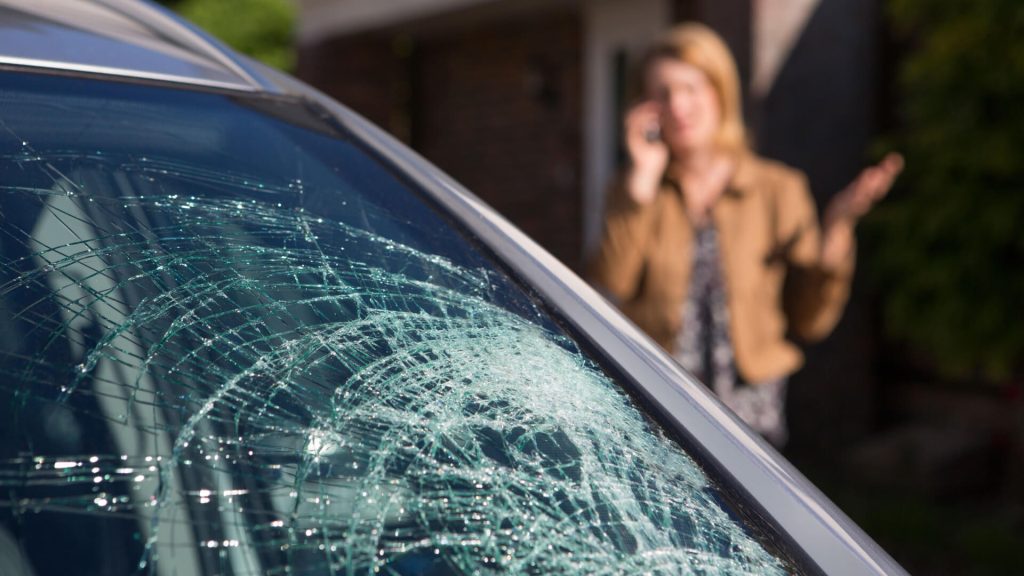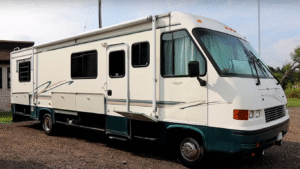CRACK! You’re cruising down the highway, music on, when a small rock suddenly chips your windshield. Now you’re stuck wondering — is this just cosmetic, or could it turn into something worse? And more importantly: Does car insurance cover windshield replacement?
The short answer? It depends on your coverage. Some auto insurance policies fully cover windshield repairs and replacements — especially if you have comprehensive coverage or a glass-specific rider. Others may require you to pay a deductible, or might not cover it at all.
Understanding what’s covered, and under what conditions, can save you hundreds of dollars and avoid unnecessary delays in repair. In this guide, we’ll break down what types of car insurance cover windshield damage, how to file a claim, and what to watch out for.
When Does Insurance Cover Windshield Replacement?
Not every windshield crack turns into a costly repair — depending on your insurance, you might be fully or partially covered. Here’s how it works based on your coverage type:
1. Comprehensive Coverage – Non-Collision Damage
Comprehensive insurance protects your car from things other than accidents — like weather, animals, or vandalism. If your windshield cracks because of:
✅ A rock hits your glass while driving
✅ Hail, falling branches, or storm debris
✅ Theft or vandalism
✅ Animal impact (yes, bird strikes count!)
Then your insurance will usually cover it, minus your deductible.
🔍 Quick tip: If the cost of the replacement is less than your deductible, insurance won’t help. So a $300 windshield repair with a $500 deductible means you’re paying the full amount out of pocket.
2. Collision Coverage – Accident-Related Damage
If the damage to your windshield happened during a car accident, this falls under collision insurance — even if you caused the crash. Like comprehensive, you’ll have a deductible here too.
📌 Example: You rear-end another car and your windshield cracks. If the repair costs $1,500 and your deductible is $1,000, your insurer pays $500.
3. Glass Coverage Add-On (Rider) – No Deductible in Some Cases
Some insurers offer glass coverage riders — an optional add-on that covers windshield repairs or replacements without a deductible.
This is especially helpful if you drive often in areas with debris-prone highways or extreme weather.
It’s available in most states and is typically low-cost.
State-specific bonus: In states like Florida, Kentucky, and South Carolina, windshield replacement is covered with no deductible by law — as part of an effort to keep roads safer through clear visibility.
When Does Insurance NOT Cover Windshield Replacement?
Not every cracked windshield is covered by insurance. Some situations automatically disqualify you from a claim, meaning you’ll have to pay out of pocket. Let’s break it down.
1. If You Only Have Liability Insurance
Liability insurance covers damage you cause to others’ property, not your own vehicle. Therefore, it won’t cover your windshield repairs or replacement. For coverage of your vehicle’s damages, including the windshield, comprehensive or collision coverage is necessary.
Example: If you’re at fault in an accident and damage another person’s windshield, your liability insurance will cover their repairs. However, your own windshield damage won’t be covered without additional coverage.
2. If the Damage Was Intentional or Due to Negligence
Insurance policies typically exclude coverage for damages resulting from intentional acts or negligence. Negligence may include failing to address minor damages that later escalate.
Examples of denied claims:
Intentionally causing damage to your own windshield.
Ignoring a small chip that develops into a large crack over time.
Solution: Promptly repair minor chips to prevent them from worsening and ensure potential coverage.
Note: Insurance policies can have varying exclusions. It’s essential to review your specific policy details or consult with your insurance agent to understand your coverage fully.
Deductibles and Costs: Should You File a Claim or Pay Out of Pocket?
So, your windshield is cracked—now what? Should you file an insurance claim or pay for the repair yourself? The answer depends on your deductible and the repair cost. Let’s break it down in simple terms.
How Deductibles Work (And Why They Matter)
A deductible is the amount you pay before your insurance kicks in.
✔ If your repair cost is higher than your deductible, insurance helps cover the rest.
❌ If your repair cost is lower than your deductible, you pay the full amount yourself—insurance won’t cover anything.
Example:
- Your deductible: $500
- Windshield replacement cost: $300
- Outcome: You pay the full $300 because the cost is less than your deductible—filing a claim wouldn’t help.
- Your deductible: $100
- Windshield replacement cost: $300
- Outcome: You pay $100, and insurance covers the remaining $200—so filing a claim makes sense.
Bottom line: If your deductible is high, small repairs aren’t worth filing a claim because you’d pay out of pocket anyway.
Can You Get a Windshield Replacement for Free?
In some states, yes!
Certain states, like Florida, Kentucky, and South Carolina, have laws requiring free windshield replacement if you have comprehensive insurance.
Why? These states consider windshields a safety issue, so they require insurance companies to cover repairs with no deductible.
Example:
- You live in Florida and have comprehensive coverage.
- Your windshield cracks.
- Insurance pays 100%—you pay nothing!
If you’re in another state, you’ll likely need to pay a deductible.
Should You File a Claim or Pay Out of Pocket?
Here’s a quick guide to help you decide:
✔ File a claim if:
- The repair/replacement cost is higher than your deductible.
- Your state offers zero-deductible glass coverage.
- Your insurer won’t raise rates for a windshield claim (check with them!).
❌ Pay out of pocket if:
- The repair is cheap ($100-$200), but your deductible is high ($500+).
- You don’t want to risk insurance premium increases.
- You filed multiple claims recently and don’t want insurers to see you as high-risk.
Example:
- Your windshield repair is $150, but your deductible is $500 → Pay out of pocket.
- Your windshield replacement is $800, and your deductible is $100 → File a claim!
💡 Some insurers increase premiums if you file too many claims, even for windshields. Always check with your provider before filing!
Frequently Asked Questions
It depends on the state. Some states have strict laws that require immediate repair if the crack obstructs the driver’s view. Even if it’s legal, driving with a damaged windshield is unsafe and can weaken the structural integrity of your car.
If you purchase a used car and transfer the insurance policy, your coverage remains the same. However, if the previous owner’s windshield was already damaged before you insured the car, it may not be covered under your new policy.
No, you can choose your own repair shop, but some insurers have preferred auto glass companies that may offer direct billing, lower costs, or faster service. If you go to a non-approved shop, you might have to pay upfront and seek reimbursement.
No, as long as you replace it with the correct type of glass. In fact, a cracked or damaged windshield can decrease your car’s value more than a proper replacement would.
Most standard windshields are covered under comprehensive insurance, but some luxury or high-tech windshields with built-in sensors and ADAS (Advanced Driver Assistance Systems) may require higher repair costs, which could be partially covered or subject to special policies.
DIY repair kits can work for very small chips, but they don’t provide the same durability as professional repairs. If the crack spreads later, your insurer might not cover it since it was already “tampered with.”
Not necessarily. Windshield claims under comprehensive coverage usually don’t raise your premiums, but filing multiple claims in a short period could signal higher risk, potentially leading to an increase. Always check with your insurer before filing.
Not always. If the crack is smaller than a quarter and not in the driver’s line of sight, it can usually be repaired instead of replaced. However, if it’s larger or spreading, a full replacement may be required for safety reasons.





